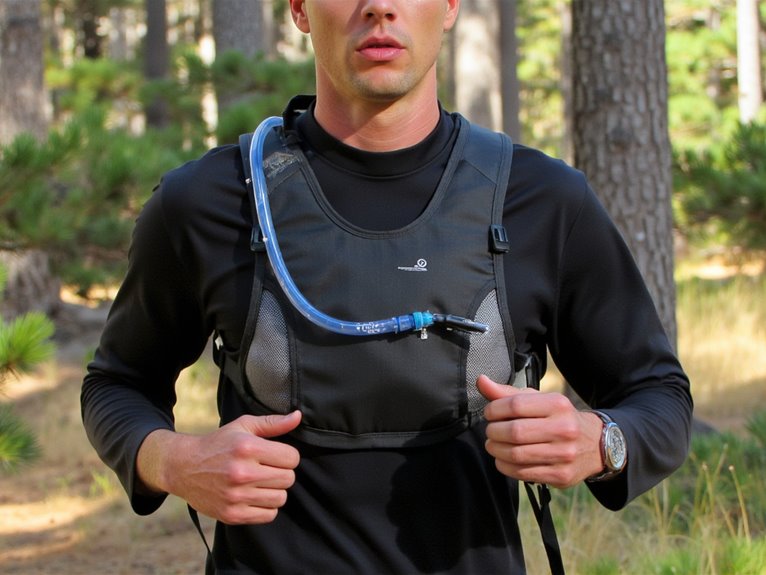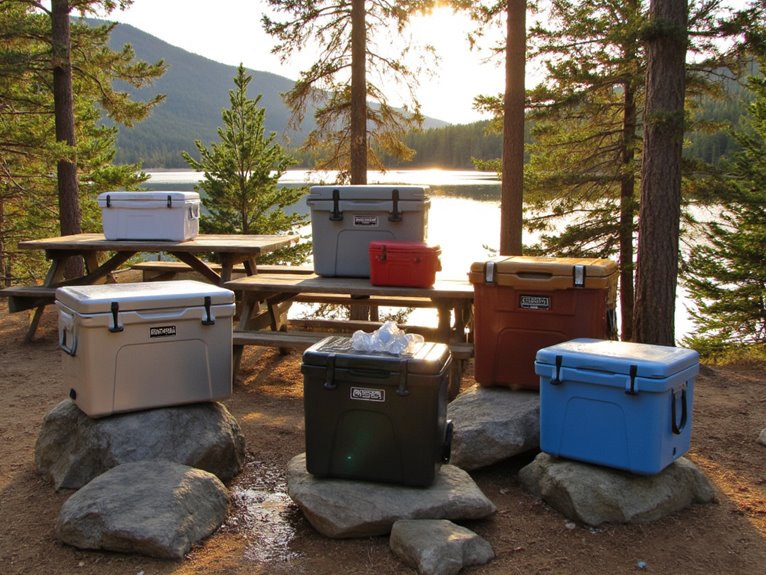Can I Bring a Backpack on a Kayak?
When planning a kayaking trip, understanding the compatibility between your kayak type and backpack size is vital to guarantee a safe and enjoyable experience on the water. Consider the kayak's storage capacity, your paddling skills, and the backpack's size and weight. A smaller, lighter backpack with a lower profile is preferred, weighing no more than 20-30 pounds. Properly secure the backpack behind the cockpit or near the footwell, and consider alternative storage options like dry bags or deck storage compartments. By doing so, you'll be well-prepared for a successful and enjoyable kayaking adventure, and there's much more to discover on this exciting journey.
We are supported by our audience. When you purchase through links on our site, we may earn an affiliate commission, at no extra cost for you. Learn more. Last update on 10th December 2025 / Images from Amazon Product Advertising API.
Kayak Type and Backpack Compatibility
When it comes to carrying a backpack on a kayak, the type of kayak you're paddling plays a significant role in determining the compatibility and feasibility of this setup.
For instance, touring kayaks with their longer waterlines and more open cockpits provide ample space for storing a backpack.
Inflatable kayaks, on the other hand, may not be the best choice due to their limited storage capacity and fragile construction.
Recreational kayaks with smaller cockpits may require more careful packing to accommodate a backpack.
Whitewater kayaks, with their focus on agility, are often too compact for backpack storage.
Understanding the unique characteristics of your kayak will help you determine the best approach to carrying a backpack on your paddling adventures.
Backpack Size and Weight Considerations
With the kayak type and compatibility considerations addressed, attention turns to the backpack itself, where size and weight become vital factors in determining the feasibility of carrying a pack on a kayak.
A smaller backpack with a lower profile is generally preferred, as it reduces the risk of interference with paddling and allows for easier maneuverability.
Weight is also a vital consideration, as excessive weight can compromise the kayak's stability and affect its performance.
Aim for a pack that weighs no more than 20-30 pounds, depending on your kayak's capacity and your personal strength.
Paddling Skills and Comfort Level
A kayaker's paddling skills and comfort level play a crucial role in determining their ability to safely and efficiently maneuver a kayak while carrying a backpack.
As a kayaker, it's essential to be honest about your skills and experience level. If you're a beginner, it's best to start with shorter trips and lighter loads. As you gain experience and confidence, you can gradually increase the distance and weight.
Some key considerations include:
- Your ability to maintain balance and stability while paddling
- Your comfort level with traversing through tight spaces or rough waters
- Your endurance and stamina for longer trips or heavier loads
Securing the Backpack on Kayak
Properly securing the backpack on the kayak is critical to maintaining balance, stability, and access to essential gear while paddling.
A well-secured backpack stays dry and within reach, allowing you to focus on traversing the waters.
To secure your backpack, start by placing it behind the cockpit or near the footwell, depending on your kayak's design.
Use straps, bungee cords, or netting to tie it down, making sure it's snug and won't shift during paddling.
Consider using a waterproof bag or dry sack to add an extra layer of protection.
Alternative Storage Options
In addition to securing a backpack on the kayak, paddlers can investigate alternative storage options that provide easy access to essential gear while keeping it dry and organized.
Dry bags attached to the kayak's deck lines or cockpit provide a convenient and water-resistant storage solution.
Deck storage compartments or hatches integrated into the kayak's design offer additional storage space for smaller items.
Paddle-specific bags or pouches attached to the paddle shaft or kayak's deck allow for quick access to frequently used items, such as sunscreen or a first-aid kit.





